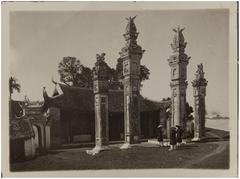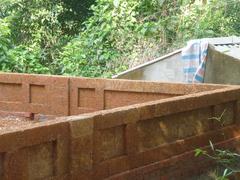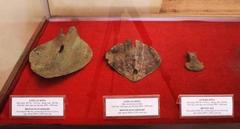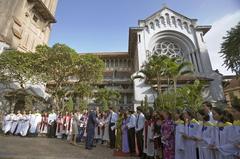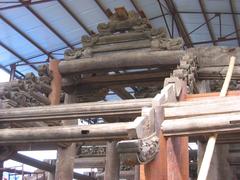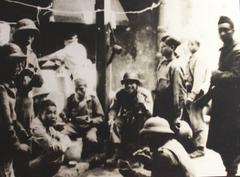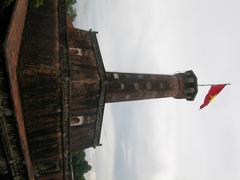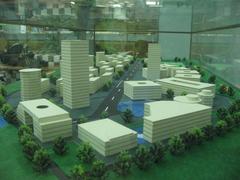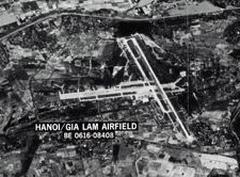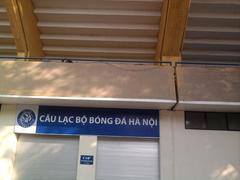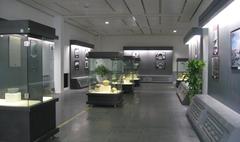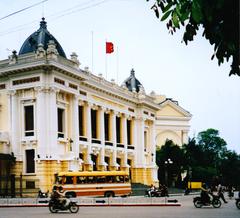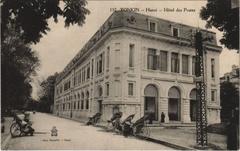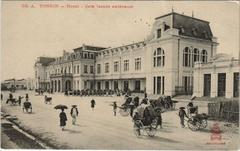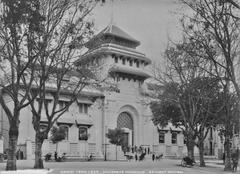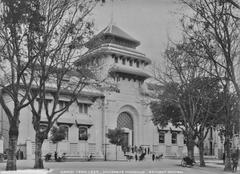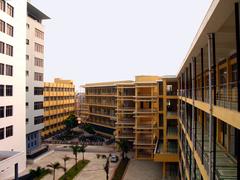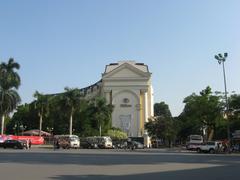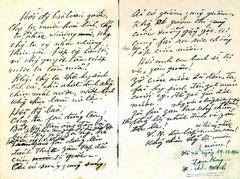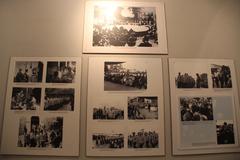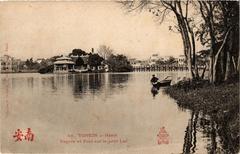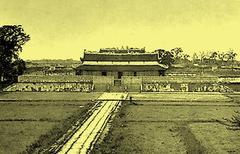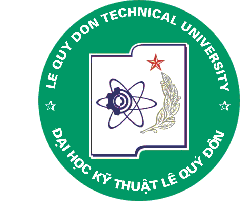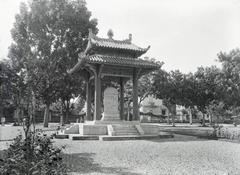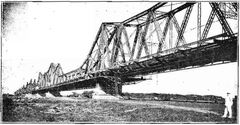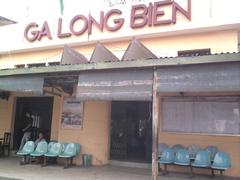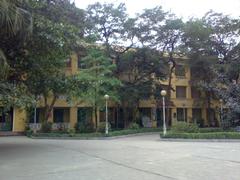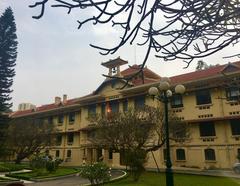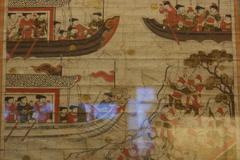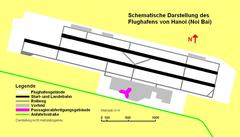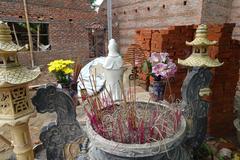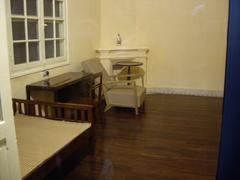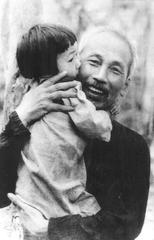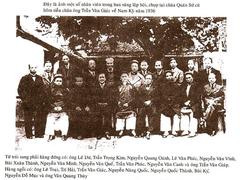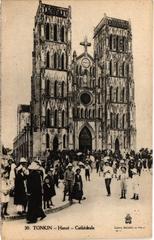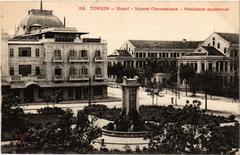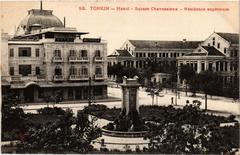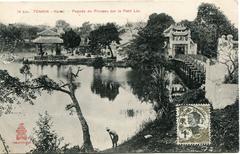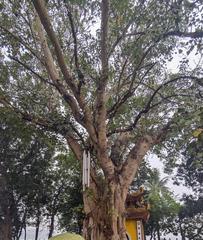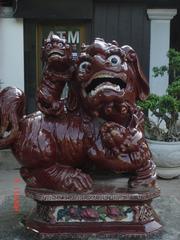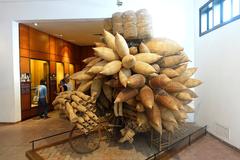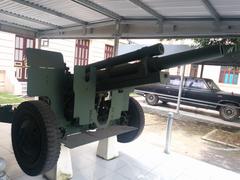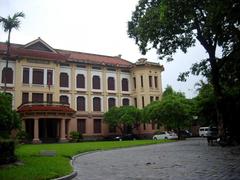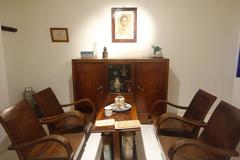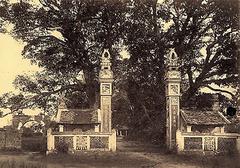
Bach Mai Airfield Hanoi: Visiting Hours, Tickets, and Historical Sites Guide
Date: 04/07/2025
Introduction to Bach Mai Airfield and Its Significance
Located just south of Hanoi’s bustling city center, Bach Mai Airfield is a striking testament to Vietnam’s turbulent military history and enduring resilience. Established during the French colonial period, the airfield played a pivotal role in various conflicts, from colonial military campaigns to the Vietnam War. As a strategic base for the North Vietnamese Air Force, Bach Mai stood at the heart of aerial defense during fierce Cold War confrontations and extensive U.S. bombing raids.
Today, while its military operations have ceased, Bach Mai Airfield remains a compelling historical landmark, drawing visitors eager to explore Vietnam’s wartime legacy. Adjacent to the airfield is the Vietnam People’s Air Force Museum, which preserves and showcases the nation’s aerial warfare history through extensive artifact collections and interactive exhibitions.
This comprehensive guide offers a detailed look at Bach Mai Airfield’s evolution, its cultural and military significance, and all the practical information you need for your visit—including opening hours, ticketing, accessibility, and nearby attractions. Whether you are a history enthusiast or a curious traveler, this resource will help you appreciate the enduring legacy of Bach Mai Airfield and the Vietnam People’s Air Force Museum. For further reading, consult authoritative sources such as GlobalSecurity.org and Wikipedia’s Timeline of Hanoi.
Table of Contents
- Introduction
- Early Origins and Colonial Construction
- Japanese Occupation and World War II
- First Indochina War and Vietnamese Control
- Cold War Era and Soviet/Chinese Assistance
- The Vietnam War: Bach Mai’s Role
- Post-War Transition and Civilian Use
- Visiting Bach Mai Airfield: Practical Information
- Vietnam People’s Air Force Museum
- Additional Travel Tips and Nearby Sites
- Frequently Asked Questions (FAQ)
- Conclusion
- References and Further Reading
Early Origins and Colonial Construction
Bach Mai Airfield was established during the French colonial era, constructed in the early 20th century to support both military and civil aviation needs. Its strategic location, close to Hanoi’s city center, made it a key hub for French reconnaissance and transport aircraft. The airfield initially featured a single runway and basic facilities, quickly becoming an integral part of French military operations in Indochina (GlobalSecurity.org).
Japanese Occupation and World War II
During World War II, the Japanese Imperial Army occupied Hanoi and repurposed Bach Mai Airfield for their military operations. They expanded the airfield’s infrastructure, extending runways and adding new support buildings. Its proximity to major transportation routes and administrative centers cemented its strategic value (Wikipedia: Timeline of Hanoi).
First Indochina War and Vietnamese Control
After Japan’s defeat, French forces briefly regained the airfield, but it soon became contested during the First Indochina War (1946–1954). Both French and Viet Minh forces utilized the airfield for air operations and logistics. The French defeat at Dien Bien Phu in 1954 led to Bach Mai Airfield’s transfer to North Vietnamese control, marking a new era as a command center for the burgeoning North Vietnamese Air Force (Pacific Wrecks).
Cold War Era: Soviet and Chinese Assistance
With backing from the Soviet Union and China, Bach Mai Airfield underwent extensive upgrades during the Cold War. Runways were reinforced, and advanced radar and missile defense systems were installed. The base became home to Soviet-supplied MiG-17 and MiG-21 fighter jets, central to defending Hanoi and the Red River Delta (GlobalSecurity.org).
The Vietnam War: Bach Mai’s Pivotal Role
Bach Mai Airfield’s strategic importance peaked during the Vietnam War. It served as a primary base for North Vietnamese air defense, launching intercepts against U.S. aircraft and hosting critical anti-aircraft artillery and surface-to-air missile sites. The airfield was heavily targeted during U.S. bombing campaigns, including Operation Rolling Thunder and Operation Linebacker II. Despite repeated attacks, rapid repairs and robust defensive measures kept the base operational (Wikipedia: Timeline of Hanoi).
The adjacent Bach Mai Hospital played a crucial humanitarian role, treating thousands of war casualties, especially during the intense bombings of 1972. The survival and resilience of both the airfield and hospital became powerful symbols of Vietnamese determination (Bach Mai Hospital Bombing).
Post-War Transition and Civilian Use
After 1975, Bach Mai Airfield’s military role diminished. The site was gradually adapted for mixed civilian and military functions, serving emergency and civil aviation needs. While no longer a major operational airbase, many historic structures remain, bearing witness to Hanoi’s wartime resilience (GlobalSecurity.org).
Visiting Bach Mai Airfield: Practical Information
Visiting Hours and Tickets
- Public Access: Bach Mai Airfield itself is largely accessible through guided tours, as it remains a controlled site. Public access is limited, and visits are best arranged in advance with reputable tour operators.
- Typical Hours: 8:00 AM to 4:00 PM, Monday to Saturday (may vary by tour provider).
- Entrance Fee: Modest fees apply, usually included in tour packages. Confirm current rates with your chosen operator.
Accessibility and Travel Tips
- Location: Approximately 5 km south of central Hanoi.
- Getting There: Reachable by taxi, ride-hailing apps, or local buses.
- Visitor Advice: Wear comfortable shoes, bring water, and prepare for outdoor conditions. Note that photography may be restricted in some areas; check with your guide.
Guided Tours and Educational Visits
Specialized tours focused on Vietnam War history are available, often led by knowledgeable guides who provide rich historical context. Booking ahead is recommended, especially during peak travel seasons.
Nearby Attractions
Combine your visit with stops at Bach Mai Hospital, the Vietnam Military History Museum, and Hanoi’s Old Quarter for a comprehensive historical experience.
Vietnam People’s Air Force Museum
Historical Background and Significance
The Vietnam People’s Air Force Museum, situated on the edge of the historic Bach Mai Airfield, chronicles the evolution of Vietnam’s air defense forces. Established on the former airbase grounds, the museum preserves artifacts spanning from the colonial era through the Vietnam War and beyond (Wikipedia; Traces of War).
Museum Layout and Key Exhibits
- Indoor Exhibition Halls: Two floors of displays showcasing the history of the VPAF, including pilot biographies, uniforms, weaponry, and relics from downed U.S. aircraft.
- Outdoor Aircraft Park: Features over 100 aircraft and large-scale military artifacts, including MiG fighters, helicopters, anti-aircraft guns, and missile systems (VinWonders).
- Special Exhibits: Displays on Vietnam’s role in the Soviet Interkosmos space program, personal stories of pilots, and a memorial area honoring air force martyrs (VNITourist).
Visiting Hours and Admission
- Address: 173C Truong Chinh Street, Thanh Xuan District, Hanoi, Vietnam
- Opening Hours: Tuesday to Saturday, 8:00 a.m.–11:30 a.m. & 1:00 p.m.–4:30 p.m.; closed Mondays and public holidays (Wikipedia).
- Admission Fee: 20,000 VND (approx. $0.80 USD); children under 6 enter free (Travel Hanoi).
Facilities and Accessibility
- Amenities: Restrooms, free parking, nearby eateries, and basic souvenir kiosks.
- Accessibility: Main building is wheelchair accessible, but outdoor areas may be uneven. English translations are limited; consider a local guide or translation app.
- Photography: Allowed indoors and outdoors; drones are prohibited.
Visitor Etiquette and Cultural Insights
- Respectful Conduct: The museum is both a historical site and memorial. Dress modestly and behave respectfully, especially in memorial areas.
- Educational Value: The museum offers unique insights into Vietnam’s military history and is engaging for visitors of all ages (Uncover Vietnam).
Additional Travel Tips and Nearby Sites
- Best Time to Visit: October to April (dry season) offers pleasant weather for outdoor exploration.
- Language: Basic Vietnamese or a translation app will enhance your visit.
- Combine Visits: Pair your trip with other historical sites like Hoa Lo Prison or the Vietnam Military History Museum for a fuller understanding of Hanoi’s past.
Frequently Asked Questions (FAQ)
Q: What are the Bach Mai Airfield visiting hours?
A: Guided visits generally operate from 8:00 AM to 4:00 PM, Monday to Saturday. The museum is open Tuesday to Saturday, 8:00 a.m.–11:30 a.m. & 1:00 p.m.–4:30 p.m.; closed Mondays and public holidays.
Q: Is there an entrance fee?
A: Museum admission is 20,000 VND (approx. $0.80 USD); fees for airfield tours vary by provider.
Q: Are guided tours available?
A: Yes, but English-speaking guides are limited. Booking through local operators or bringing a guide is advised.
Q: Is the site accessible for wheelchairs?
A: The main building is accessible, but outdoor areas may be challenging.
Q: Is photography allowed?
A: Yes, photography is permitted except for drones or in restricted areas.
Conclusion
Bach Mai Airfield and the Vietnam People’s Air Force Museum together offer a deeply educational and moving experience for visitors. The site captures Vietnam’s journey through war and recovery, highlighting the resilience and ingenuity of its people. With well-preserved artifacts, interactive displays, and thoughtful memorials, this historical landmark is a must-visit for anyone interested in Vietnam’s military and cultural heritage.
For the best experience, plan your visit during Hanoi’s dry season, leverage guided tours or translation apps, and explore nearby historical attractions for a comprehensive understanding of Hanoi’s rich past.
References and Further Reading
- GlobalSecurity.org – Bach Mai Airfield
- Wikipedia: Timeline of Hanoi
- Vietnam War Airfields – GlobalSecurity.org
- Bach Mai Hospital Bombing
- Cultural Impact of the Vietnam War
- Vietnam People’s Air Force Museum, Wikipedia
- Traces of War: Bach Mai Airfield
- Pacific Wrecks: Bach Mai Airfield
- VinWonders: Vietnam People’s Air Force Museum
- Travel Hanoi: Vietnam Air Force Museum
- Uncover Vietnam: Vietnam People’s Air Force Museum
- VNITourist: Air Force and Air Defence Museum
- Hanoi Guides: Hanoi Travel Guide Vietnam







